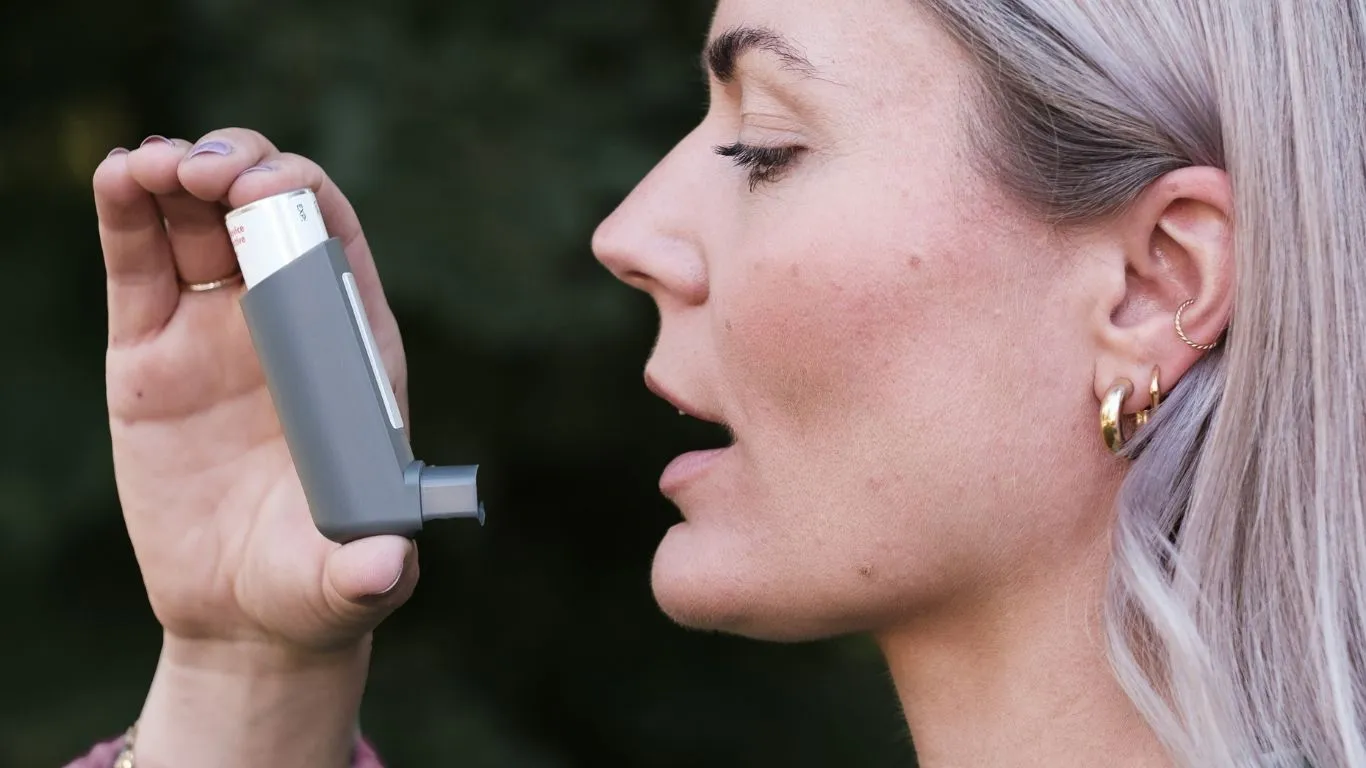How to Prevent Asthma Attacks in Children: Proven Tips for Safer Breathing
As an asthma expert and a passionate advocate for respiratory health, I’ve worked with countless families struggling to keep their little ones safe from asthma attacks. If you’re a parent, I know how scary it is to see your child gasping for air. That’s why today, we’re diving deep into how to prevent asthma attacks in children. Prevention is always better than dealing with a full-blown asthma flare-up, and trust me, with the right approach, you can drastically reduce the chances of an attack happening.
Understanding Childhood Asthma: What Triggers an Attack?

First things first, you can’t prevent what you don’t understand. Asthma is a chronic condition that causes inflammation in the airways, making it harder to breathe. But what actually triggers an asthma attack in children?
- Allergens: Dust mites, pet dander, pollen, and mold can set off an asthma attack in a heartbeat.
- Cold Air & Weather Changes: Sudden temperature shifts, especially cold, dry air, can tighten those tiny airways.
- Exercise: While physical activity is crucial, some kids experience exercise-induced asthma, where their breathing worsens during or after play.
- Respiratory Infections: A simple cold or flu can escalate into something serious for an asthmatic child.
- Strong Odors & Pollution: Perfumes, cleaning products, smoke, and air pollution can be major culprits.
- Emotional Stress: Anxiety and crying (yes, even happy crying!) can trigger an attack.
Every child is different, so identifying what specifically affects your child is key.
How to Prevent Asthma Attacks in Children: The Essentials

Now that we know what triggers an asthma attack, let’s talk about what you can do to stop them before they start.
1. Maintain an Asthma-Friendly Home
Home should be a safe space for your little one, but allergens love to lurk in unexpected places. Here’s how you can asthma-proof your home:
- Declutter and Dust Regularly: Less clutter means fewer places for dust mites to hide. Wipe surfaces with a damp cloth to trap dust instead of just spreading it around.
- Use Allergen-Proof Bedding: Invest in hypoallergenic mattress covers and pillows to keep dust mites away.
- Control Humidity: A dehumidifier can prevent mold growth, while an air purifier with a HEPA filter removes airborne triggers.
- Keep Pets Out of Bedrooms: If your child is sensitive to pet dander, keep furry friends out of sleeping areas.
- Choose Fragrance-Free Cleaning Products: Many cleaning sprays contain strong chemicals that can irritate the airways.
2. Stick to a Consistent Medication Plan
This one is huge. If your child has been prescribed asthma medication, sticking to the schedule is crucial. Even when they seem fine, skipping doses can allow inflammation to build up unnoticed.
Two main types of medications:
- Long-term control meds: These reduce inflammation over time and prevent attacks.
- Quick-relief (rescue) inhalers: Used during an attack to open airways fast.
Work closely with your child’s doctor to adjust dosages when needed, and make sure your child always has their rescue inhaler on hand—especially during school and playtime.
3. Recognize Early Warning Signs

One of the most valuable things you can do is to learn how to spot an asthma attack before it happens. Here are some early warning signs:
- Frequent coughing, especially at night
- Shortness of breath, even with minimal activity
- Chest tightness or discomfort
- Wheezing (a whistling sound while breathing)
- Fatigue or less energy during play
If you notice any of these symptoms creeping up, it’s time to take action. A quick-relief inhaler, steam therapy, or even just resting in a cool environment can help stop an attack in its tracks.
Healthy Lifestyle Choices to Prevent Asthma Attacks

Managing asthma isn’t just about medications and avoiding triggers. A healthy lifestyle can make a world of difference. I’ve seen children who once struggled daily with asthma symptoms thrive simply by adopting a few essential habits. Let’s talk about some of the game-changers.
1. Encourage Regular (But Smart) Physical Activity
Many parents worry about their child playing sports or running around too much, fearing it could trigger an attack. And while exercise-induced asthma is real, completely avoiding physical activity isn’t the answer.
Instead, focus on activities that help strengthen the lungs without overloading them:
- Swimming: The warm, humid air at indoor pools is gentler on the airways.
- Yoga & Breathing Exercises: These improve lung capacity and control.
- Walking & Cycling: Less intense yet effective for overall health.
- Team Sports with Breaks: Activities like baseball or volleyball allow rest periods.
The key is to ensure your child warms up before exercise and has their inhaler nearby if needed. I always remind parents—keeping kids active boosts their immune system, improves lung function, and reduces asthma severity over time.
2. Boost Their Immune System
Colds and respiratory infections are among the biggest asthma attack triggers. Keeping your child’s immune system strong can significantly lower their risk of catching viruses that lead to flare-ups.
Here’s what works:
- A nutrient-rich diet: Lots of fresh fruits, vegetables, and omega-3-rich foods like salmon.
- Proper hydration: Water helps thin mucus buildup in the airways.
- Regular handwashing: A simple but effective way to prevent infections.
- Enough sleep: Lack of rest weakens the immune system, making asthma symptoms worse.
One tip I always share—during flu season, be extra cautious. Flu vaccines and extra vitamin C can go a long way in keeping asthma symptoms under control.
3. Manage Stress and Anxiety

Many parents don’t realize that stress and strong emotions can trigger asthma just as much as allergens or cold air. When kids get anxious, their breathing can become shallow, leading to tightness in the chest.
Some ways to help:
- Teach deep breathing techniques: Slow, controlled breaths can help manage anxiety-induced asthma symptoms.
- Encourage relaxation activities: Music, coloring, or storytelling can be calming.
- Keep a predictable routine: Knowing what to expect each day can reduce stress.
Personally, I’ve seen children with frequent attacks improve significantly just by reducing anxiety levels. If your child is nervous about their asthma, talk openly about it and help them feel in control.
Working with Schools to Create an Asthma-Friendly Environment
Your child spends a huge chunk of their day at school, so it’s important to make sure their environment is asthma-friendly. Many schools are now more aware of asthma management, but as a parent, being proactive can make all the difference.
1. Inform Teachers and Staff
Teachers aren’t mind-readers, and not all of them fully understand asthma. Make sure your child’s teachers, school nurse, and even the gym coach know about their condition. Provide them with a simple asthma action plan that includes:
- Common symptoms to watch for in your child.
- Triggers that could set off an attack.
- Steps to take in case of an emergency.
Many schools allow kids to carry their rescue inhalers, but some require a doctor’s note—so check in advance!
2. Ensure an Allergy & Asthma-Friendly Classroom
Some simple adjustments can make the classroom safer for children with asthma:
- No strong perfumes or air fresheners in the classroom.
- Good ventilation—open windows or air purifiers.
- Allergen-free zones if your child has specific allergies (like dust or pet dander).
One of my patients had frequent asthma flare-ups at school, and we later found out her classroom had a mold issue. A quick chat with school staff led to proper cleaning, and her symptoms improved almost overnight.
3. Have an Emergency Plan in Place
Even with the best prevention strategies, asthma attacks can still happen. Make sure the school:
- Has your child’s rescue inhaler accessible at all times.
- Knows how to recognize an asthma emergency.
- Has a protocol in place for calling you or medical help if needed.
Keeping open communication with your child’s teachers and school nurse can make a huge difference in how well asthma is managed during school hours.
Case Studies & Real-Life Examples

One of the most powerful ways to understand how to prevent asthma attacks in children is through real-life experiences. Over the years, I’ve worked with many families, and some stories stick with me because they showcase just how much the right approach can change a child’s life.
Case Study 1: Emma – The Nighttime Cougher
Emma was a 6-year-old who struggled with asthma attacks almost every night. Her parents were at their wit’s end because she would wake up coughing uncontrollably, sometimes needing her inhaler multiple times a night. After a thorough assessment, we pinpointed the issue: dust mites. The family’s carpeted floors and stuffed animals were harboring allergens.
Here’s what we changed:
- Switched to hypoallergenic mattress and pillow covers.
- Removed unnecessary stuffed animals and washed the remaining ones weekly.
- Added an air purifier with a HEPA filter to her bedroom.
- Ensured good nighttime humidity control.
Within weeks, Emma’s nighttime coughing dramatically reduced, and her parents finally got some well-deserved rest.
Case Study 2: Jake – The Soccer Star with Asthma
Jake was an active 9-year-old who loved soccer, but his asthma was holding him back. His parents thought he’d have to quit sports, but instead, we worked on a strategy to help him stay in the game safely.
Here’s what worked:
- Making sure he used his inhaler 15 minutes before playing.
- Encouraging proper warm-ups to ease his lungs into physical activity.
- Monitoring air quality and avoiding outdoor play on high-pollution days.
- Ensuring he took breaks and stayed hydrated.
With these simple changes, Jake not only stayed on the team but played stronger than ever.
Key Takeaways: What You Need to Remember
We’ve covered a lot, so let’s highlight the key points to keep in mind when preventing asthma attacks in children:
- Identify triggers early: Whether it’s dust, pollen, exercise, or cold air, knowing what affects your child is half the battle.
- Keep a clean, asthma-friendly home: Use allergen-proof bedding, reduce dust, and improve air quality.
- Stick to a medication plan: Don’t skip doses, and always have a rescue inhaler on hand.
- Encourage safe physical activity: Staying active strengthens the lungs, but warm-ups and precautions are crucial.
- Work with your child’s school: Teachers and staff should be aware of your child’s asthma action plan.
- Manage stress and immune health: A strong immune system and lower stress levels can significantly reduce asthma attacks.
FAQs
Q: Can my child outgrow asthma?
A: Some children do see their symptoms lessen as they grow older, but asthma is a chronic condition that can persist into adulthood. The key is managing it effectively at all stages of life.
Q: Is there a cure for asthma?
A: Unfortunately, there is no cure, but with the right management, children with asthma can live completely normal, active lives.
Q: Can diet help with asthma prevention?
A: Yes! Foods rich in antioxidants, omega-3 fatty acids, and vitamins C and D can support lung health. Avoiding processed foods and known allergens can also help.
Q: Should I avoid having pets if my child has asthma?
A: Not necessarily! If your child is allergic to pet dander, keeping pets out of their bedroom, regular grooming, and HEPA air filters can reduce exposure.
Bonus: Additional Resources & DIY Tips
Looking for more ways to keep your child’s asthma under control? Here are some helpful resources:
- CDC – Asthma Guidelines
- American Lung Association – Asthma Resources
- American Academy of Allergy, Asthma & Immunology
DIY Tips for Asthma Management at Home
- Homemade vapor rub: Mix coconut oil with a few drops of eucalyptus or peppermint oil and apply it to the chest.
- Steam therapy: A simple bowl of hot water and a towel over the head can help ease congestion.
- Asthma symptom diary: Track triggers and symptoms to find patterns and improve management.
Appendix: References, Disclaimer, and Call to Action
References
Disclaimer
This article is for informational purposes only and should not replace medical advice. Always consult with a healthcare professional for personalized asthma management strategies.
Call to Action
Managing your child’s asthma doesn’t have to be overwhelming. With the right strategies, you can help them breathe easier and live their best life. If you found this article helpful, share it with other parents who may need support. And if you have any personal experiences or tips, drop a comment below—I’d love to hear from you!

Bianca Nala is a compassionate Nurse Practitioner with a strong background in primary and respiratory care. As a health writer for Healthusias.com, she combines her clinical expertise with a talent for clear, relatable storytelling to help readers better understand their health. Bianca focuses on topics like asthma, COPD, chronic cough, and overall lung health, aiming to simplify complex medical topics without losing accuracy. Whether she’s treating patients or writing articles, Bianca is driven by a single goal: making quality healthcare knowledge accessible to everyone.






